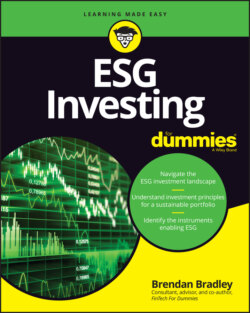Читать книгу ESG Investing For Dummies - Brendan Bradley - Страница 48
Issues with ESG scoring
ОглавлениеESG data providers perform a significant part of the investment procedure by collecting and assessing information about companies’ ESG practices and scoring them appropriately. The expansion of these ratings systems has helped to encourage the growth of ESG investing by providing asset owners and managers with an alternative to managing such widespread due diligence themselves. There are more than 100 ESG data providers, which include well-known suppliers such as Bloomberg, FTSE, MSCI, Sustainalytics, Refinitiv, and Vigeo Eiris, as well as focused data providers such as S&P’s Trucost (providing carbon and “brown revenue” data) and ISS (corporate governance, climate, and responsible investing solutions). Investors increasingly view material ESG factors as being essential drivers of a company’s capacity to produce sustainable long-term performance. In turn, ESG data is growing in importance for investors’ ability to assign capital effectively.
Despite the significant contributions that data providers have achieved in evolving ESG investing, asset owners and managers should understand the intrinsic limitations of this data, as much as the challenges of relying on any one data provider.
Quality data has always been the lifeblood of investment analysis. While “quality” can be expressed in different ways, most investors agree that consistency and comparability in the accessibility of data among companies are critical elements of an operational data set. However, the current environment imposes barriers to realizing such quality when a company’s ESG data practices are rather ad hoc. Associations and regulators don’t always require companies to report on all of their ESG data; therefore, they can decide which ESG factors are material to their business performance and what information to reveal to investors. As such, asset owners and investment managers can be left to find their own solutions to these challenges, which can create an additional stream of inconsistent, non-comparable, and less material information.
These opposing methodologies have repercussions for investors. In selecting a given provider, investors are, in effect, associating themselves with that company’s ESG investment ethos in terms of data acquisition, materiality, aggregation, and weighting. This selection is further complicated by the lack of transparency into those practices. Most data providers regard their policies as proprietary information. By depending on an ESG data provider’s score, asset owners are accepting the assessments of that provider without a full appreciation of how the provider determined those ratings.
